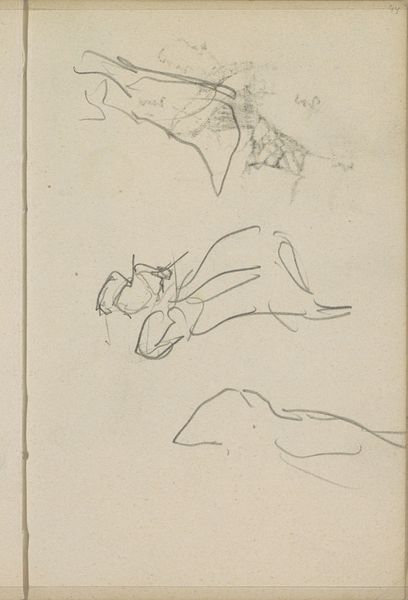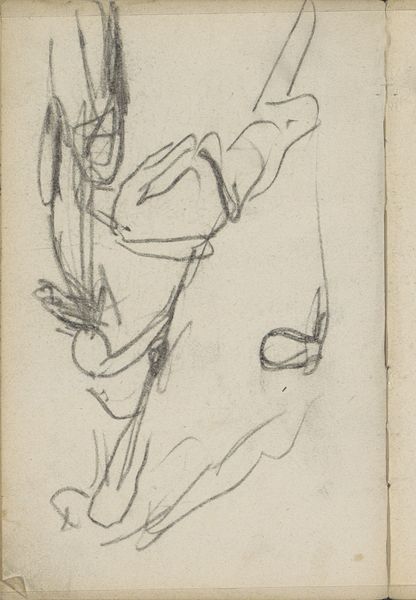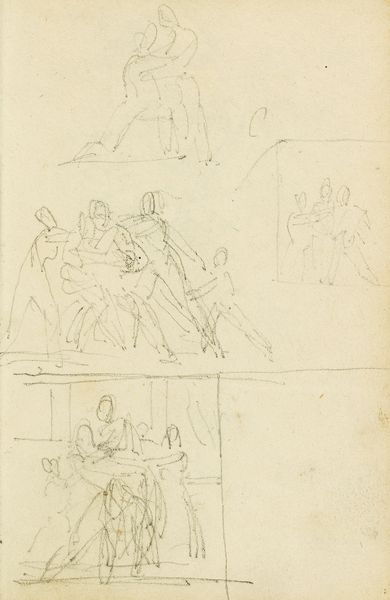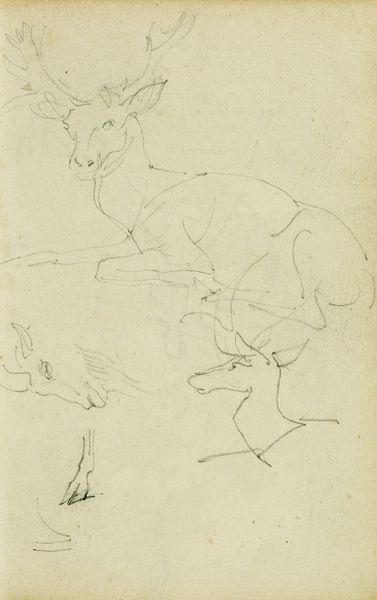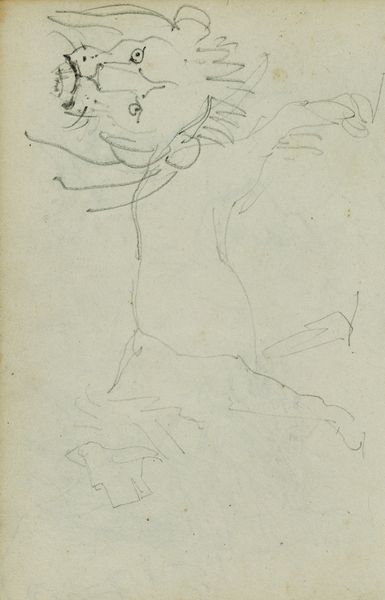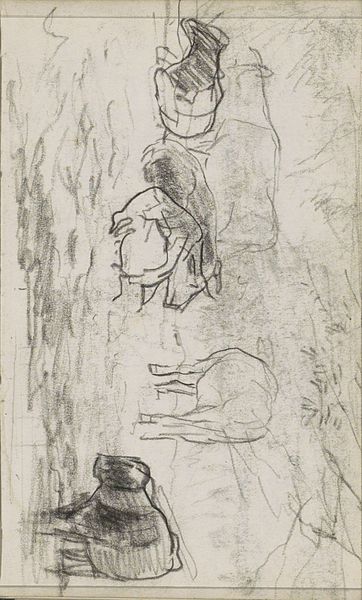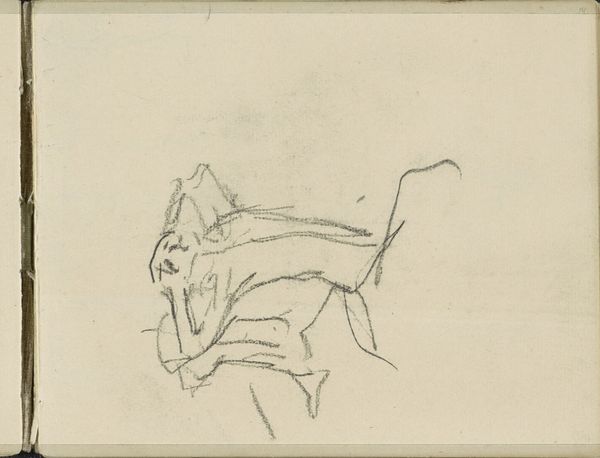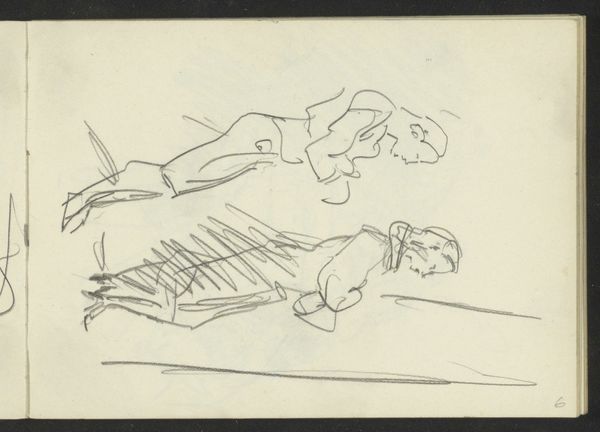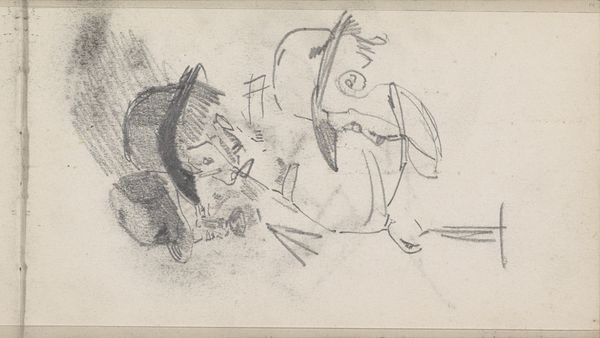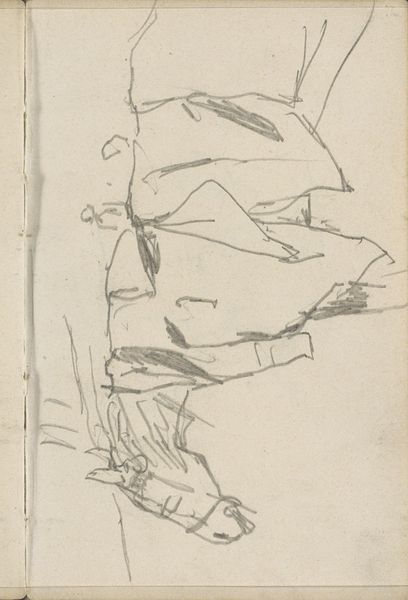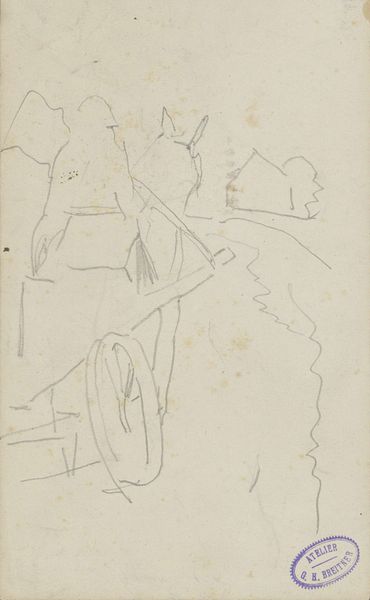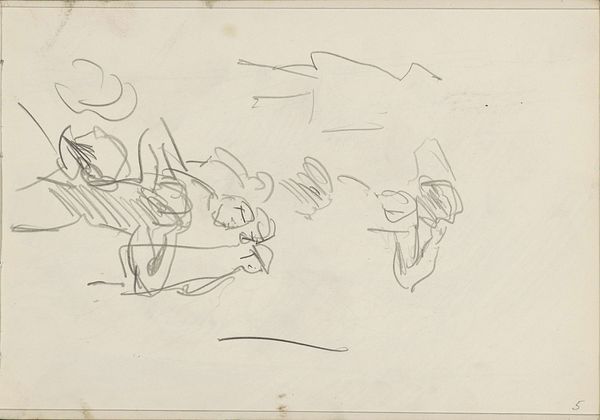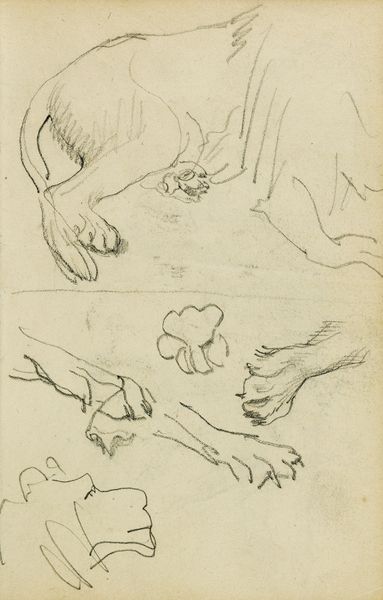
Copyright: Rijks Museum: Open Domain
Curator: This is George Hendrik Breitner’s sketch titled "Zittende figuren in een etablissement," dating back to the 1910s and held here at the Rijksmuseum. What catches your eye initially? Editor: There's an immediacy to it, a rawness. It feels like a fleeting moment captured in frantic lines, all pencil on paper. The composition is quite fragmented; a struggle, perhaps. Curator: Exactly. Think about Breitner’s milieu—late 19th, early 20th century Amsterdam. He was deeply engaged with depicting the lives of working-class people, often frequenting places like these. This sketch gives us access to his artistic process and maybe an actual site of working class interactions. It probably gave form to the later paintings which made it into the commercial world and public conciousness. Editor: So, this sketchbook is a witness, not just an artwork? How does this material connection affect what we see on the surface? I notice the angular forms, the repeated lines suggesting movement or perhaps uncertainty. The light seems captured by the contrast of deep strokes, highlighting how light hits the interior surfaces. Curator: It reveals his intense study of figures in casual poses and his interest in working people at leisure. Notice how the artist chose pencil lines and sketching. The figures aren’t idealized or posed. What were their material conditions that impacted Breitner as he chose his subjects and locations? The labor of sitting or not working becomes visualized. Editor: Interesting. Viewing this as a kind of historical documentation—you almost expect the smells, noises of an old bar or coffeehouse to waft from the sketch itself. It appears less a polished depiction and more an impression, an unrefined vision. Curator: And it asks, who are they beyond their depiction. As such, the sketch isn't simply about aesthetic formalism; rather, the image represents labor relations that can be observed at the time it was made and the role an artist like Breitner plays in this depiction. How would one’s class define one’s ability to engage with such drawings as these? Who could afford these works and who could not? Editor: That adds another layer—Breitner capturing not just an image but also a moment laden with social context. Curator: Indeed. Reflecting on this drawing, the quick strokes become less chaotic, more deliberate—recording aspects of urban working-class experiences during a specific timeframe in the Netherlands. Editor: Yes, it’s fascinating how close examination teases out greater context, beyond the strokes themselves, leading to something much larger and more potent.
Comments
No comments
Be the first to comment and join the conversation on the ultimate creative platform.
